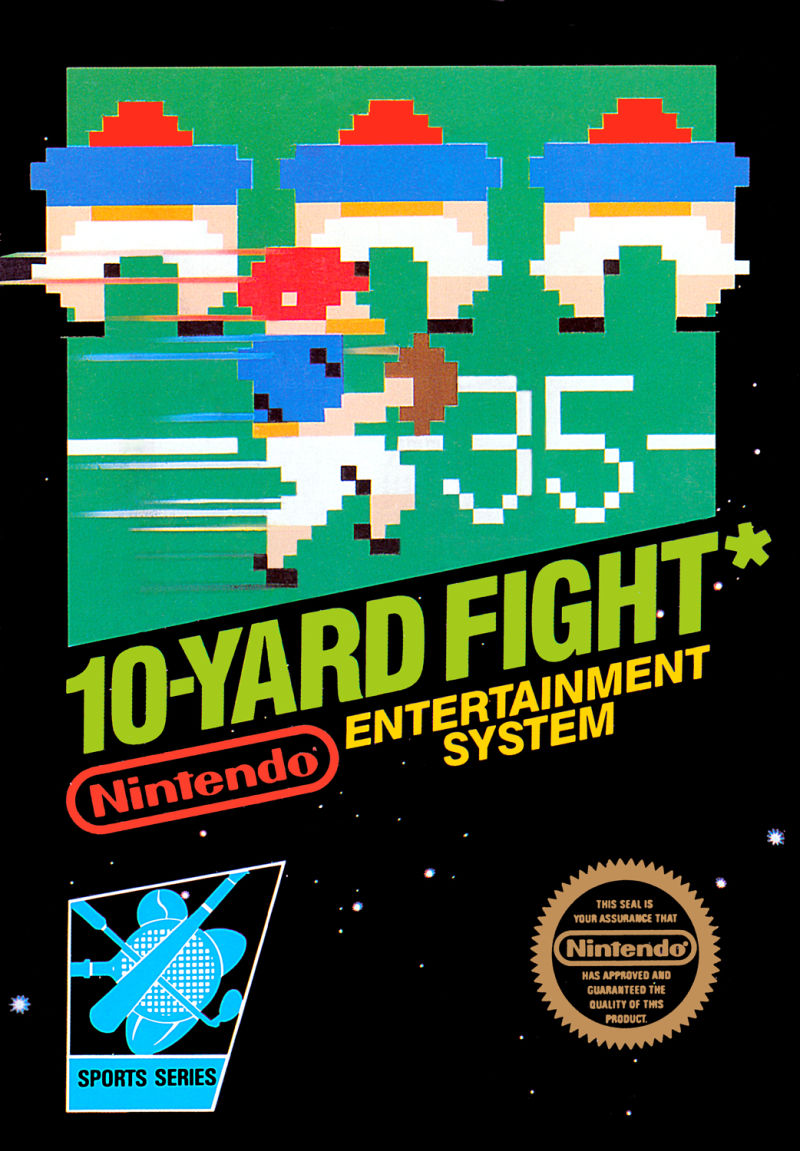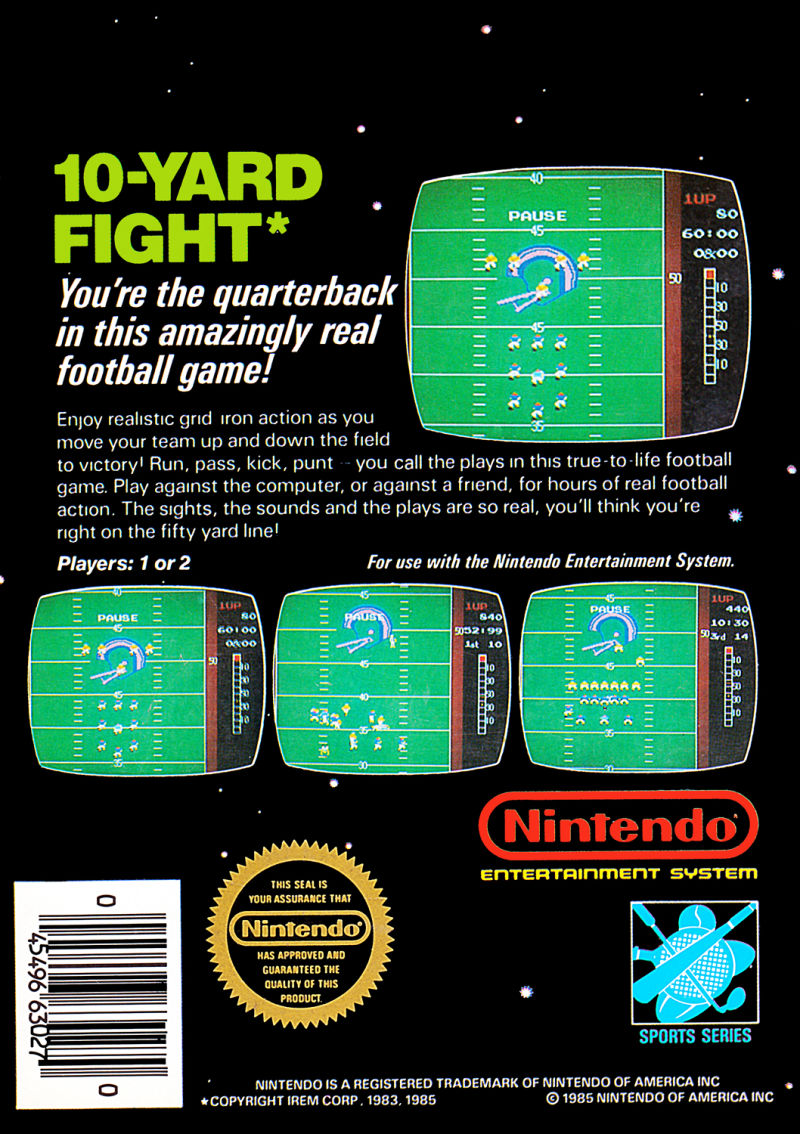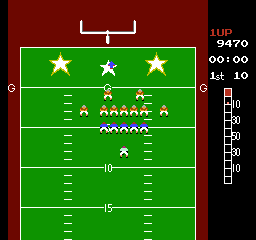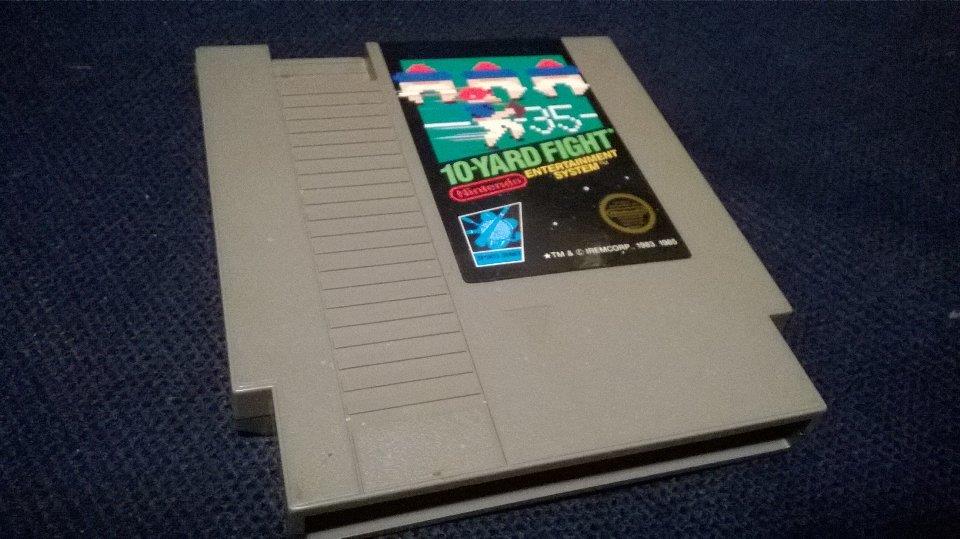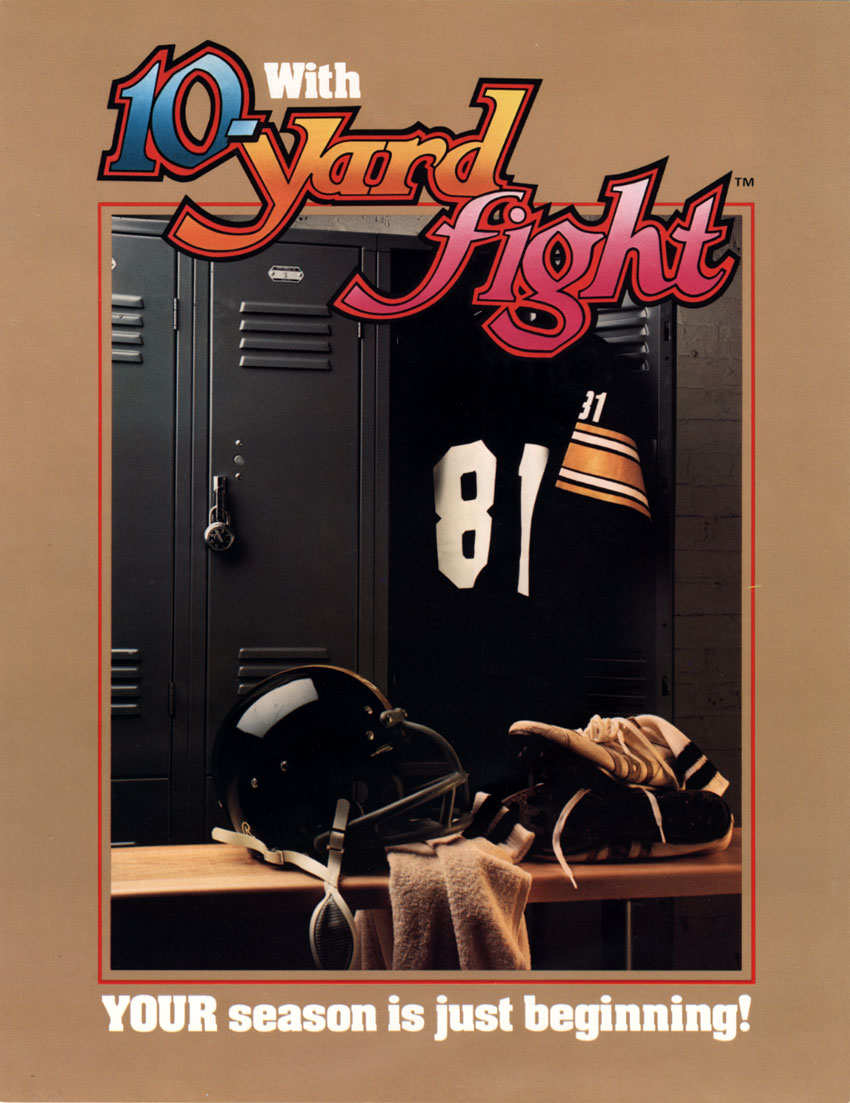This football game is from a top down perspective. The player does not select offensive or defensive plays. On offense the player receives the snap as the quarterback and than can elect to run as the quarterback, throw a pass to a receiver, or toss it to the running back. When on defense the player chooses one of the players to control and the computer controls the rest. The ball can be punted or a field goal can be attempted.
The game has five levels of increasing difficulty: high school, college, professional, playoff, and Super Bowl. If the player wins both halves of an “accelerated real time” 30-minute half at an easier level, the player advances to the next level of difficulty.
Japanese studio Irem originally released it’s American football sim 10-Yard Fight as an arcade game in 1983. While the Famicon version had the same high-score focused gameplay, this NES port – which was a launch title in the U.S. – actually played differently. In the arcade and Famicon versions the player only ever plays as the offensive team: the goal is to score a single touchdown before time runs out, at which point you then move on to the next, more difficult opponent. The NES version, on the other hand, plays more like normal American football, with a standard ‘six points for a touchdown’ scoring system and the players getting to control both offense and defense.
Irem’s early Famicon cartridges, including 10-Yard Fight, had a red LED light in the middle of them. When you switched on the console, the cartridge lit up.
Cover Art:
Screenshots:
Ads:
Books / Magzine Review:
Video:


